Pimples are inflammatory elements of the skin that appear due to increased activity of the sebaceous glands. Because of this, changes occur not only in the skin, but also in the follicle. Acne can cause infection. Despite the fact that the immune system tries to fight, pus remains under the skin in large quantities. This is very dangerous for your health. Not only teenagers, but also adults are susceptible to acne. As a result, depression and the occurrence of various diseases.
The main causes of acne
Many people ask the question: “What causes acne on the face?” The photos published in this article clearly show how much even a person’s appearance can change, not to mention what happens under the skin. There are many reasons for acne. The most common are hormonal imbalances or changes caused by age. But there are other reasons.

So, let's look at what causes acne on the face:
- excess subcutaneous fat;
- hereditary predisposition;
- poor nutrition;
- stress;
- a lot of dead cells under the skin;
- skin damage;
- inflammation;
- poor facial skin care;
- menstrual cycle;
- lipid metabolism is disturbed;
- the stratum corneum of the skin is enlarged;
- diseases of the stomach and intestines;
- impaired immunity;
- exposure to harmful microorganisms;
- improper use of cosmetics;
- working with toxic substances;
- climate impact;
- excessive cleanliness;
- medicines.
Foods that cause acne
All the reasons listed above are not a complete list of what causes pimples and acne on the face. Sometimes they appear suddenly. Common products that can help with this include:
- Coffee. It should not be drunk on an empty stomach.
- Animal fats. It is better to replace them with vegetable ones.
- Nuts. You should not eat a lot of walnuts, pistachios and almonds.
- Dairy products. It's better to eat low-fat ones. Eat less cheese and ice cream.
- Sweets (candy, sugar, soda, chocolate, etc.).
- Flour products, especially cakes, chips, cookies.
How to choose treatment?
For effective treatment it is necessary to assess the severity of the disease. You can photograph all areas of the skin where pimples, blackheads and blackheads are visible. They determine the degree of the disease. Black dots need to be counted and compared with the scale:
- mild – less than 10 (grade I);
- average – 10-25 (II degree);
- heavy – 26-50 (III degree);
- very severe - over 50 (IV degree).
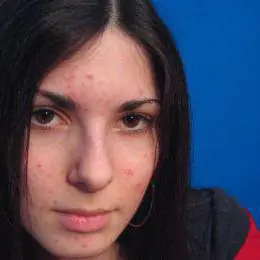
Already formed inflammations (pimples and blackheads) are also calculated in order of increasing degree:
- 1st degree – less than 10;
- 2 tbsp. – 10-20;
- 3 tbsp. – 21-30;
- 4 tbsp. – over 30.
Acne on the face
What causes acne on the face? On the forehead, such inflammations most often form due to the large production of sebum. This area of the face contains many sebaceous and sweat glands. Acne and pimples can appear due to diseases of the gallbladder, pancreas, intestines and stomach.
Inflammatory formations above the eyebrows indicate intestinal irritation. Pimples located closer to the hair indicate a malfunction of the gallbladder. The appearance of acne directly on the forehead means possible intoxication of the body as a whole. Acne on the chin indicates a disorder of the digestive or endocrine system.
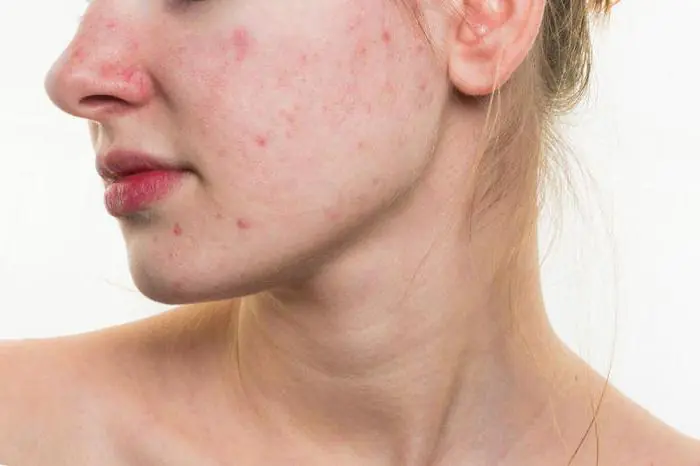
Pimples that appear on the nose occur due to hormonal imbalance. This is usually the teenage period. If this phenomenon is observed in an adult, the immune system, digestive or endocrine system may be impaired. pimples on the bridge of the nose are a consequence of liver overload and poor blood purification. Pimples appearing on the lips indicate a violation of the digestive system, and on the cheeks - an overload of the lungs.
Acne in children
Pimples often appear in babies. If they are white, you don't have to worry too much. This is most likely milia (blockage of the sebaceous glands). Such rashes go away on their own after a couple of months. Sometimes acne appears in a child due to allergic reactions. But they can also indicate diseases. Most often, acne in children appears as a result of measles, scarlet fever, rubella, and chickenpox.
Skin problems in adolescence
Acne on the face of a teenager most often appears as a result of puberty, since hormones are responsible for the functioning of the sebaceous glands. During this period, a large amount of secretion is produced. And this is a very favorable environment for the growth of bacteria. As a result of an increase in their numbers, inflammation manifests itself in the form of pimples and blackheads.
It is very difficult to treat them during this period, since the reason lies within the body itself. Please note that everyone's skin is different. This means that treatment is selected strictly individually. But there are some general tips:
- daily facial skin care;
- regular contrast washes twice a day (with hot water and then cold);
- use of facial scrubs;
- use of steam baths.
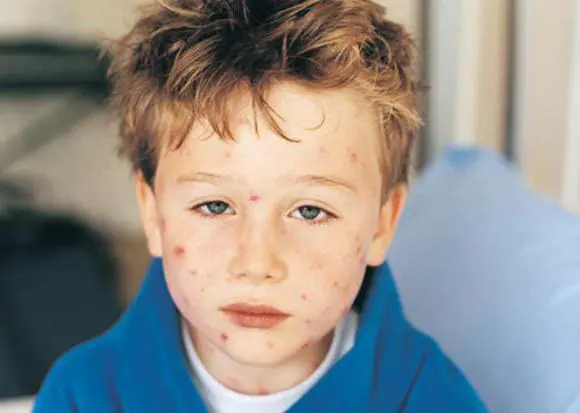
One of the best proven acne treatments is salicylic acid. You can use tar soap and mash. It is prepared in pharmacies according to a doctor's prescription. Apply in the evening with a cotton swab to the face. For external use, brewer's yeast is also good for getting rid of acne. During treatment, you must follow a diet: avoid carbonated drinks, spicy and fatty foods.
Acne in adults
Why do you get acne on your face at 30? Not only teenagers suffer from this problem, but adults can also experience inflammation of the subcutaneous tissues. There are several main reasons why adults also develop acne:
- Hormonal imbalance. In women, this often happens during menstruation or pregnancy.
- Diseases of the gastrointestinal tract.
- Hyperkeratosis (keratinization of the skin). Small “scales” appear. The sebaceous glands work very actively; waste and bacteria accumulate in their mouths. This is where acne and pimples form. This is a very serious and dangerous skin disease that is very life-threatening.
- Demodex mite. One of the most common reasons. Every person has this mite, but it is usually activated when the immune system is weakened. What causes pimples with pus on the face? This is just typical for demodex. Along with inflammation, a general redness of the skin is observed. The disease is treated by a dermatologist. At home, you need to change your bed linen more often.
- Stress.
- Poor hygiene.
- Cosmetical tools.
- Squeezing pimples. After removing one, a dozen new ones may appear.
After squeezing out pimples, wounds remain on the skin, in the treatment of which the cream with a bactericidal and wound-healing effect “ARGOSULFAN ®” has proven itself well. Unlike many antibacterial ointments that have long been familiar to us, to which microbes have developed resistance, it contains silver sulfathiazole, to which bacteria do not become accustomed. The active substance of the cream “ARGOSULFAN ®” has a wide spectrum of antibacterial action and promotes rapid healing of the wound without the formation of a rough scar.
There are contraindications. You need to read the instructions or consult a specialist.
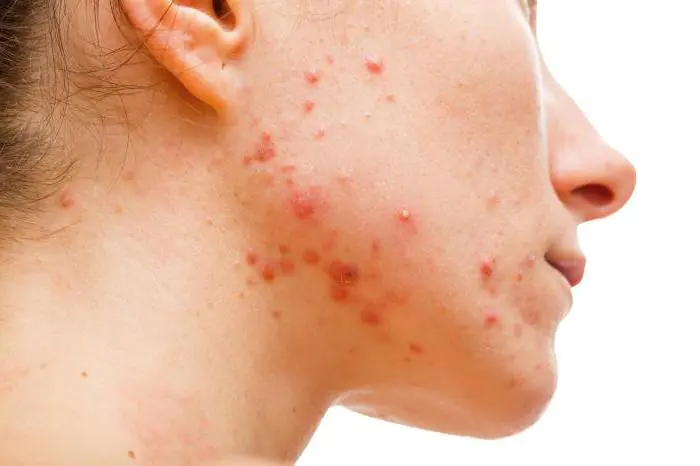
For treatment, it is necessary to correctly determine the cause of acne. But in any case, it is necessary to spend less time in the sun, maintain hygiene and diet, and also take vitamins.
Why do blackheads appear on the face?
What causes pimples and blackheads on the face? Contaminated skin and poor skin care are often to blame for this. Especially if there is no daily cleansing. Poor quality cosmetics are another cause of blackheads and pimples. There are several more reasons:
- deterioration of health;
- hormonal imbalance.
How to destroy acne?
Acne needs to be treated only comprehensively. This includes:
- constant facial cleansing;
- restoration of hormonal levels;
- restorative procedures for the skin;
- fight against pathologies and diseases that cause acne;
- face massage;
- masks;
- medicines;
- hardware therapy methods.
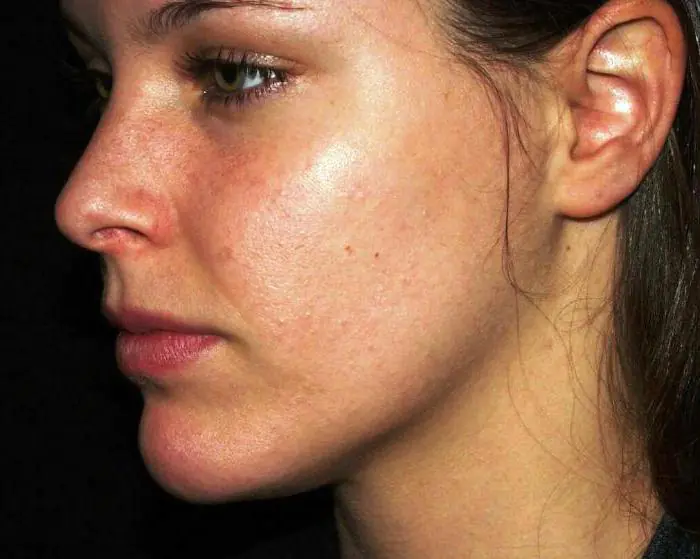
What causes acne on the face? They often occur due to poor nutrition. Therefore, it is even more important to follow a diet during treatment. Especially if you are getting rid of acne. It is necessary to exclude protein-enriched, fatty, spicy and salty foods. As well as chips, carbonated and alcoholic drinks, flavored teas, and sweets. You should give preference to fish, cereals, poultry, vegetables and fruits.
Treatment of acne with green tea
Green tea helps effectively fight acne. It is a good antioxidant and antibacterial agent. Green tea can be used as an herbal supplement or made into a cream. After brewing, the leaves are applied to the face like a mask. But first, the face must be thoroughly cleansed and rinsed with water. In China, to kill acne, green tea is drunk with honeysuckle, but without sugar, as it neutralizes the healing effect.
Treatment of acne with folk remedies
You can try to cure acne on your own. There are folk remedies that people have used since ancient times. All of them are used after preparation in the form of lotions.
- from the leaves of aloe vera;
- calendula with honey;
- from sage leaves.
- St. John's wort;
- from birch buds.
Medicines to treat acne
What causes acne on the face? Whatever the cause of their occurrence, this is subcutaneous inflammation. Since ancient times, acne has been treated with extracts of witch hazel and chamomile. Triclosan, salicylic acid, zinc oxide and vitamins A, B, C help well. When using these drugs, the layer of sebum decreases, as does the process of inflammation in the follicle and skin. All of these drugs have an antibacterial effect. Pharmaceutical products for acne are divided into two groups: for external and internal use.

For external use:
- Retinoids that target the cause of acne. Suppresses the growth of skin cells, prevents and reduces clogging of pores.
- Antibacterial agents act specifically on bacteria. These drugs include antiseptics and antibiotics.
- Azelaic acid agents inhibit cell division. And this ensures the patency of the excretory skin ducts. These drugs have antibacterial properties. Azelaic acid is found in Aknestop cream and Skinoren gel.
How to deal with acne?
After the appearance of rashes on the skin, the question arises: “What causes acne on the face and how to deal with it?” You can try cosmetics, for example:
- Antibacterial soap. But you cannot use it constantly, but only from time to time.
- Cleansing gels regulate the formation of sebum.
- Anti-aging emulsions-creams prevent micro-inflammations.
- Normalizing gels. Antibacterial agents moisturize the skin and remove excess oil.
- Masking pencils. They have an antibacterial effect and dry out acne. Apply at the first stage of inflammation.
- Moisturizing emulsions prevent acne and moisturize the skin.
Device therapy uses several technologies. For example, a complex pulse consisting of a radio frequency range and a light spectrum. When it hits an inflamed area, the impulse affects the cause of acne. There are other technologies.
What causes acne on the face? You need to pay closer attention to your skin. Perhaps the pores are clogged, there are a lot of dead cells, etc. This can be corrected with chemical peeling, which removes a large layer of the epidermis. This uses glycolic and salicylic acid. To combat acne, superficial peeling is also performed. Laser therapy is sometimes used.
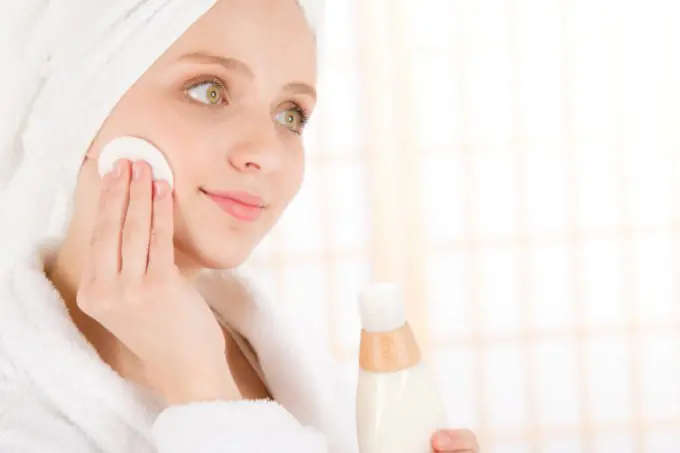
Types of eels
Acne is divided into superficial and deep. The first type is conventionally divided into open and closed. Deep ones, in turn, are accompanied by the appearance of cysts and nodes in the tissues; a large amount of pus accumulates in them, which leads to long regeneration of the skin and its difficult recovery.
Acne is divided into 3 degrees: mild (less than 10 lesions), moderate (up to 40 lesions) and severe (more than 40 lesions). A mild degree heals on its own and, as a rule, acne in this case can be easily removed from the face with the help of traditional medicine and dietary adjustments, as well as proper skin care. Severe severity is a serious reason to see a doctor.
You should not squeeze out acne on your face, which will make the situation worse. Moreover, after squeezing, scars remain, which are less likely to appear during natural cleansing of the skin.
Reasons for appearance
The sebaceous glands, which are responsible for the production of sebum, are responsible for the appearance of acne. If production is enhanced by a number of factors (age-related hormonal changes or chronic diseases), the respiration of skin cells is disrupted, which causes their contamination and inflammation due to a large accumulation of dirt and microbes.
Acne can also appear due to household dust, remnants of cosmetics on the face, and simply a dirty room in which a person spends a lot of time. To get rid of acne, you will have to resort to cleansing your facial skin using various masks, creams and scrubs. Most of these products contain enough beneficial substances to get rid of acne and impurities.
The cause of acne can be poor ecology and the presence of large amounts of household dust.
The next reason is nutritional disorders. Excessive consumption of fatty and spicy foods also leads to the production of sebum, which negatively affects the skin. Smoking and alcohol abuse are factors that cause impurities on the skin. To correct your skin condition, you will need to review your diet by adding more vegetables and fruits and temporarily eliminating fried and fatty foods.
An effective way to get rid of acne are hot compresses made from chamomile, calendula and St. John's wort.
Often the cause of acne is demodex, a mite that lives in the human skin. When the immune system is weakened, this mite begins to reproduce and then dies, causing acne. It rarely requires treatment and does not cause any complications, however, when a severe form of the disease appears, a cream is prescribed that is aimed at destroying this parasite.
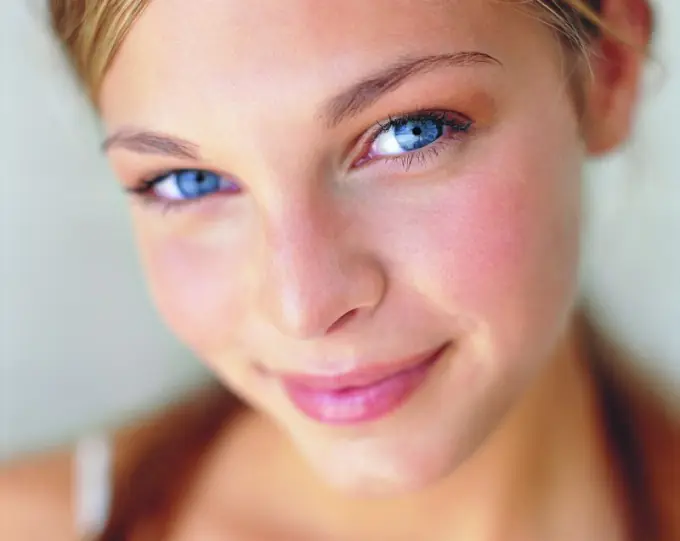
To prevent acne, it is important to eat right. Review your diet; it may contain spicy, fried foods and all kinds of spices. If your skin is prone to acne, exclude such dishes from the menu. Drinking alcohol and smoking have a negative effect on the skin. If possible, give up these bad habits, or at least reduce the dose. Good blood supply, which means breathing and nutrition of the facial skin, is provided by raw vegetables and fruits. They supply the body with necessary vitamins and microelements, and the fiber they contain helps to enhance intestinal motility and its timely cleansing of toxins.
Include at least 400 g of fresh vegetables and fruits in your daily consumption. In addition, start taking a multivitamin. To improve skin condition and prevent acne, you need daily intake of vitamins A, C, E and many others.
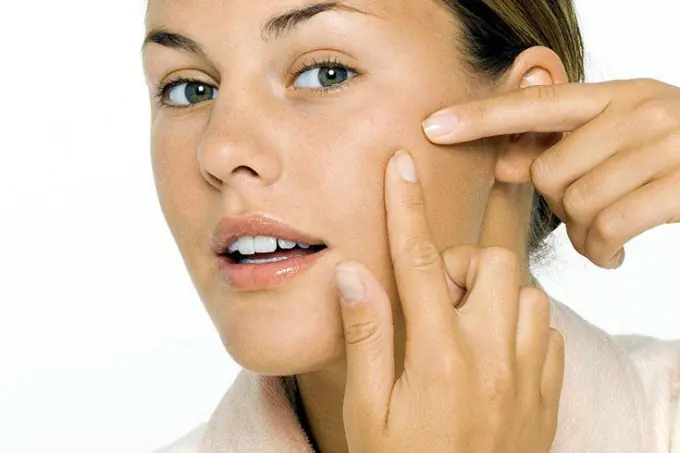
The main causes of acne
Common acne usually appears on the face, back, shoulders, and chest. Its main cause is increased sebum secretion, as well as keratinization of the skin, which leads to clogging of the sebaceous gland ducts with horny plugs. In turn, the process of acne begins with infection in the skin, which leads to the appearance of an abscess. After a certain period of time, pus is able to break through the epidermis and come out. In this case, the inflammatory infiltrate, consisting of leukocytes and surrounding the pimple, will begin to resolve. If the abscess itself was large, then during its healing period a scar will remain.
In addition to ordinary acne, there may be globular acne. This rash is located deep in the skin - in the subcutaneous tissue of the body. In this case, it is not easy for the pus to break through, so the infection can spread into deeper tissues.
Globular acne can merge with each other.
There are many more different reasons why acne can occur: deficiency (A, B2) or excessive content of vitamins in the body (B6, B12), imbalance of fat (lipids), which may be due to poor nutrition, changes in the functions of the endocrine glands (adrenal cortex, pituitary gland, parathyroid), disruption of the gastrointestinal tract, increased activity of the main sebaceous glands, which is often due to an excess of male hormones - androgens.
The use of any hormonal contraceptives or their discontinuation may also contribute to the appearance of acne.
Hereditary predisposition can also influence the appearance of acne. For example, a child whose parents suffered from acne will most likely also develop acne at a certain age.
Causes of acne inflammation
Inflammation of acne can be caused by normal microflora of human skin. In turn, this can be facilitated by an increase in sebum secretion, as well as a change in the chemical composition of the sebaceous gland secretion. An increased amount of glucose in the body's blood is also a fundamental factor in acne inflammation.
A stressful situation in itself may not be the direct cause of acne, but it can lead to increased manipulation of skin wounds and injury. Extreme stress can disrupt hormonal balance.
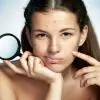
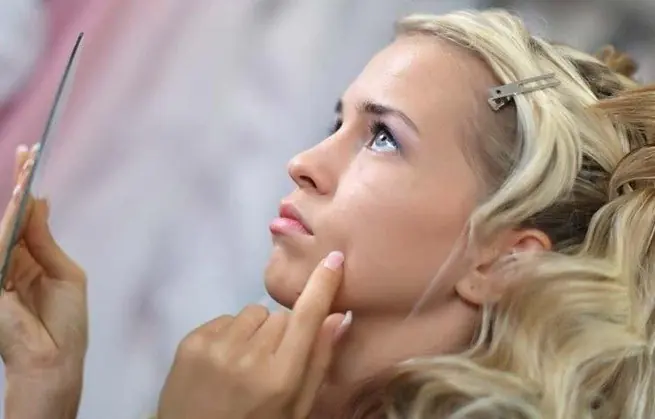

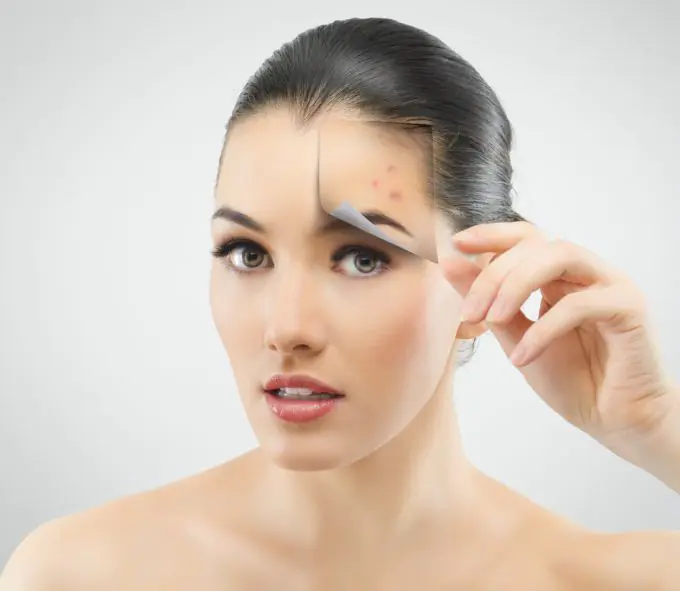
Here are the main causes of acne:
- disruption of the gastrointestinal tract;
- poor nutrition;
- improper skin care;
- hormonal imbalances.
The process of acne starts when the production of sebum prevails over the rate of its secretion. Fat stagnation begins, after which this leads to its oxidation.
How to prevent acne and regain your beauty?
First of all, you need to pay attention to food consumed. The main enemies: instant food, fast food, too fried and fatty foods, carbonated drinks, instant coffee, sugar, alcohol, cigarettes. If possible, it is necessary to reduce the consumption of such products to zero and replace them with healthier and livelier foods: salads, fruits, cottage cheese.
The second important factor that you should pay attention to is amount of fluid consumed. This does not include tea or compote, but “live” (unboiled) water. You can use filtered, or better yet, from a natural source. The body of any person consists of 70 - 80% water, and its role in the work and health of the body is irreplaceable. Consuming just at least 1.5–2 liters of water will supply every cell in the body with water. After all, each cell of the body is like a separate person who needs to take care of personal hygiene and drink water accordingly. It is necessary to feel responsibility at this stage in order to understand how important water is for the body. Today on the Internet you can find various water activators that saturate water with active substances. Some of the most effective are silicon, quartz and shungite. Shungite is the most interesting of its kind. It is believed to have arisen as a result of a meteorite impact 2 billion years ago, which explains its molecular structure of cosmic origin. The use of medicinal baths and cosmetic masks using shungite will also be beneficial.
Improper skin care and excessive use of cosmetics provokes the appearance of acne. Choose the most gentle and natural skin care products and decorative cosmetics, even if they are not very popular or difficult to obtain. It is advisable to cleanse your face in the morning and evening and use disposable paper towels instead of terry towels.
It is also important to monitor your daily routine and adhere to a healthy lifestyle. These include:
- healthy sleep;
- physical exercise;
- proper diet;
- avoidance of stressful situations.
It is important to know that when dieting its quality and results depend on the correct use of water. Water and food intake should be separate. Drink water 30-40 minutes before meals and 1-3 hours later, depending on the severity of the food.
Don't neglect consultation with a doctor. All of the above tips will not cause harm in any way, but will only help in eliminating acne.
We all get breakouts on our face and body from time to time, and they often appear in the same place.
The places where pimples most often appear are often a signal from our body that our body is malfunctioning.
Experts believe that some zones of our body correspond to certain internal organs, and pimples appearing there can indicate health problems.
Find out what breakouts mean in different places on our body and what you can do to prevent it.
Acne on the chin
If you have pimples on your chin for an hour, the most common cause is hormonal imbalance. When the adrenal glands are overactive, the result is often a rash in that area. Other causes include stress and excessive sugar consumption.
Acne on shoulders and neck
Zone 2 and 3: Stress
If you are constantly experiencing stress, the shoulder area becomes susceptible to acne. In addition, you should pay attention to whether you are carrying bags that are too heavy, the straps of which may irritate your skin.
Pimples on chest
Zone 4: Digestive system
Pimples on the chest indicate problems with the digestive tract, such as Irregular eating, poor eating habits, addiction to spicy foods or cold drinks.
Also, check that you are not wearing clothes made from poorly breathable fabrics, such as polyester or nylon. It is also worth ruling out fungal infections and allergies, especially if you have small comedones that are not affected by acne treatments.
Pimples on hands
Zone 5 and 6: Vitamin Absorption
If you have rough skin on your hands with small rashes that look like goosebumps, this may indicate keratosis pilaris – a disorder caused by poor circulation and excessive production of dead cells around the hair follicles.
Try reducing breakouts with an exfoliant and a moisturizer containing salicylic acid. If the problem persists, this may be a sign that your body does not properly absorb vitamins from the foods you eat.
Acne on the stomach
Zone 7: Blood Sugar Level
There are very few sebaceous glands in this area, which is why breakouts rarely appear here. If they do arise, it is usually due to high blood sugar or tight clothing.
Pimples on the genitals
Zone 8: Hygiene or STDs (sexually transmitted diseases)
Rashes in this area are often painful and difficult to get rid of due to high levels of humidity, ingrown hairs from shaving and waxing.
On the other hand, if the rash is itchy, oozes fluid, and does not improve after 3-4 days, it may be a symptom of sexually transmitted diseases, e.g. condyloma acuminatum.
Acne on thighs and legs
Zone 9 and 10: Skin sensitivity or allergies
Pimples on the thighs and legs are often allergic reaction for various products, such as body cream, shower gel, washing powder or fabric softener. Also, small rashes are the result of ingrown hairs after shaving or epilation.
It is best to treat such pimples with a body wash containing salicylic or glycolic acid, and also apply a light moisturizer that does not clog pores.
Acne on the back
Zones 11 and 12: Nervous or digestive system
This area is most often the site of rashes, which can be caused by a number of reasons, including allergies, increased sweating, friction from sportswear, tight clothing and poorly breathable fabrics, pressure from backpack straps, irritation from cosmetics and reactions to washing powder.
If you rule out all these factors, a high-calorie diet with lots of fried foods and lack of sleep may be the cause.
Pimples on the buttocks
Zones 13 and 14: Digestive system
Pimples that appear on the buttocks are usually caused by wearing thick underwear or underwear made from synthetic fabrics, dry skin, poor digestion or sitting for long periods of time, as well as a craving for cold drinks and spicy foods.
To get rid of pimples in this area, moisturize the area with a light cream, wear loose cotton underwear, and review your eating habits.



